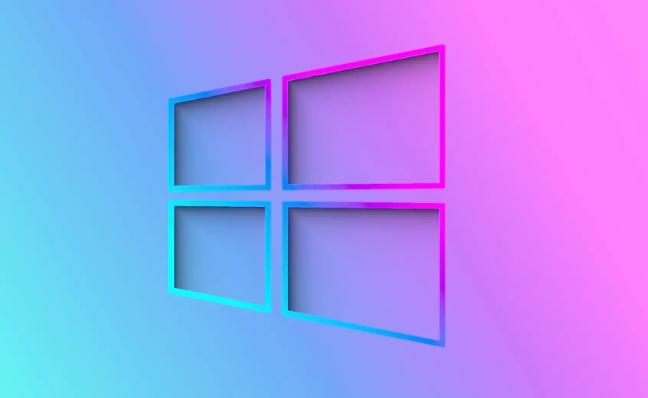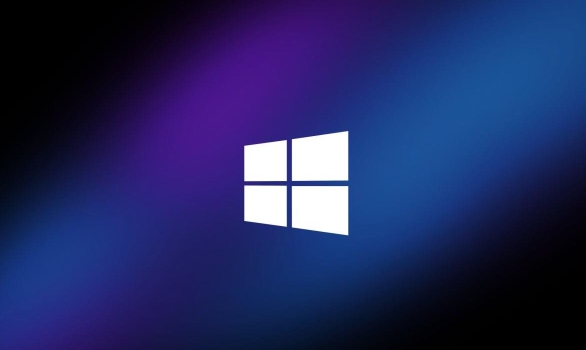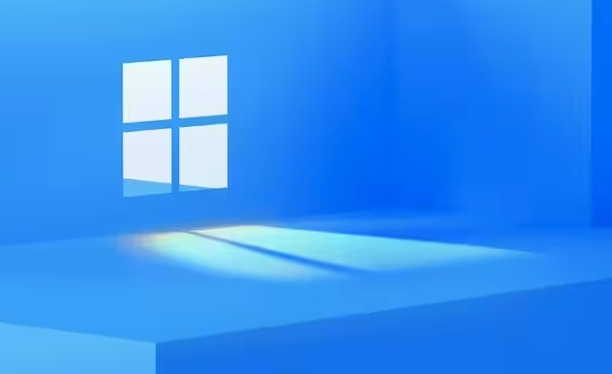To install Windows, choose an unformatted or NTFS-formatted partition with at least 64GB free space, ideally on a dedicated drive or partition. 1. Check existing partitions during setup for "Unallocated," "Primary," or "Logical" types with enough space and no critical data. 2. Avoid partitions with existing data unless you're okay with formatting them. 3. Format the chosen partition as NTFS, which is required for Windows installation. 4. Consider performance factors like installing on an SSD, placing Windows near the start of large HDDs, and ensuring UEFI/GPT compatibility. 5. Confirm the correct drive is selected, it has enough space, and any important data is backed up before proceeding.

When you're setting up a fresh Windows installation, one of the early and important decisions is choosing the right partition to install it on. The short version: you should install Windows on an unformatted or formatted NTFS partition with enough free space, ideally on a dedicated drive or partition that doesn’t contain other operating systems or critical data unless you know what you’re doing.

Here’s how to make sense of your options:

Check if You Already Have a Suitable Partition
Before creating or formatting anything, check what partitions are already available on your system. During installation, Windows Setup will show all drives and partitions it detects.
- Look for a partition labeled as "Unallocated" or "Primary" with enough space (at least 64GB for modern Windows versions).
- If there's a partition marked as "Logical" or part of an extended partition, that's fine too — just make sure it’s not being used by another OS or holding important files.
- Avoid selecting partitions that have existing data unless you’re okay with formatting them and losing everything on them.
If none of the listed partitions fit, you may need to create or resize one before proceeding.

Format and Prepare the Partition
Windows Setup lets you format and prepare a partition during installation, but keep in mind:
- Formatting will erase all data on that partition.
- Choose NTFS as the file system — it’s the only one fully supported by Windows for system installations.
- If you're installing alongside another OS like Linux, leave that partition untouched unless you want to overwrite it.
You can also use tools like Disk Management or third-party apps like GParted before starting the install to adjust partition sizes or create new ones.
Consider Drive Type and Performance
Not all drives are equal when it comes to installing Windows:
- SSD vs HDD: Install Windows on an SSD if possible. It makes a huge difference in boot time and overall performance.
- Partition Location: On large drives, especially mechanical HDDs, placing Windows near the beginning of the drive can offer slightly better read speeds.
- UEFI vs Legacy: If you're using UEFI firmware (most modern PCs), make sure the drive is set up as GPT, not MBR. Windows will install faster and more securely this way.
If you're dual-booting or replacing an old OS, make sure your firmware settings match the partition type (UEFI/GPT or Legacy/MBR).
A Few Things to Double-Check Before Confirming
Before clicking “Next” to start the installation, take a second to verify:
- ? You’ve selected the correct drive — especially if you have multiple drives or partitions
- ? The partition is either empty or formatted (Windows will usually prompt you to format if needed)
- ? You’ve backed up any important data that might be on the target partition
- ? You’re aware of how much space you’re allocating — don’t go below 64GB unless you really have to
It’s easy to mix up which drive is which, especially if you have multiple internal or external disks connected. Take a moment to confirm.
That’s basically it. Choosing where to install Windows isn’t rocket science, but getting it right upfront saves a lot of headaches later. Just make sure the partition is clean, formatted properly, and on the right kind of drive.
The above is the detailed content of Where to install Windows on which partition. For more information, please follow other related articles on the PHP Chinese website!

Hot AI Tools

Undress AI Tool
Undress images for free

Undresser.AI Undress
AI-powered app for creating realistic nude photos

AI Clothes Remover
Online AI tool for removing clothes from photos.

Clothoff.io
AI clothes remover

Video Face Swap
Swap faces in any video effortlessly with our completely free AI face swap tool!

Hot Article

Hot Tools

Notepad++7.3.1
Easy-to-use and free code editor

SublimeText3 Chinese version
Chinese version, very easy to use

Zend Studio 13.0.1
Powerful PHP integrated development environment

Dreamweaver CS6
Visual web development tools

SublimeText3 Mac version
God-level code editing software (SublimeText3)

Hot Topics
 What is the difference between macOS Recovery and Internet Recovery?
Jul 02, 2025 am 12:24 AM
What is the difference between macOS Recovery and Internet Recovery?
Jul 02, 2025 am 12:24 AM
macOSRecoveryisabuilt-inrecoverysystemonahiddenpartitionofyourMac’sstartupdisk,providingtoolslikeDiskUtility,Terminal,andmacOSreinstallation.1.Itloadsquicklyfromlocalstorage.2.Requiresafunctioninginternaldrive.3.ToolsincludereinstallingmacOS,repairin
 Can I use my Windows 7 product key to activate a new Windows 10 installation
Jul 02, 2025 am 12:15 AM
Can I use my Windows 7 product key to activate a new Windows 10 installation
Jul 02, 2025 am 12:15 AM
No,youcannotdirectlyuseaWindows7productkeytoactivateWindows10.1.Windowsproductkeysareversion-specific,soaWindows7keyonlyworksforWindows7.2.IfyourPCwasupgradedfromWindows7toWindows10beforesupportended,itmayhaveadigitallicenselinkedtothehardware,allowi
 Minimum system requirements for Windows 11
Jul 03, 2025 am 12:48 AM
Minimum system requirements for Windows 11
Jul 03, 2025 am 12:48 AM
The minimum hardware requirements of Windows 11 mainly include five aspects: 1. The processor must be from the sixth-generation Intel or Ryzen starting point or above, supports 64-bit, dual-core and above, the main frequency is not less than 1GHz, and is on the Microsoft support list; 2. At least 4GB of memory, but 8GB or higher is recommended to ensure smooth use; 3. At least 64GB of storage space, the system itself occupies about 25~30GB, and it is recommended to use SSD; 4. The TPM2.0 security module must be supported and enabled, many motherboards did not meet this condition before 2016; 5. Some users try to bypass the restricted installation may cause driver or update problems, and ordinary users do not recommend this.
 How to convert MBR to GPT for Windows 11 installation
Jul 05, 2025 am 12:39 AM
How to convert MBR to GPT for Windows 11 installation
Jul 05, 2025 am 12:39 AM
To convert the hard disk from MBR to GPT to install Windows 11, you must first back up the data and confirm that the motherboard supports UEFI; 1. Automatic conversion using Windows installation media: Insert the USB disk and boot from USB, press Shift F10 on the installation interface to open the command prompt, enter diskpart, listdisk, selectdiskX, clean, convertgpt commands to complete the conversion. This method will clear all contents of the disk; 2. Lossless conversion of non-system disks in existing Windows: Use AOMEIPartitionAssistantStandard and other tools to right-click to convert to GPT disk. It is still recommended to backup data before operation;
 This copy of the Install macOS application is damaged
Jul 06, 2025 am 12:26 AM
This copy of the Install macOS application is damaged
Jul 06, 2025 am 12:26 AM
The "InstallmacOS is corrupted" prompt is usually caused by security mechanisms rather than file corruption. Common reasons include unofficial download sources, incomplete files, failure to verify signatures in the old system, or misjudgment of Gatekeeper; solutions include: 1. Forced opening of the installer through terminal commands and starting the USB flash drive; 2. Temporarily closing Gatekeeper verification; 3. Remount the installer and delete kernelcache file repair permissions; ways to avoid problems include prioritizing the use of official channels to download, verify the SHA256 value, selecting a trusted third-party site, and avoiding modification of the installation content.
 Windows 10 installation stuck on logo
Jul 06, 2025 am 12:01 AM
Windows 10 installation stuck on logo
Jul 06, 2025 am 12:01 AM
When booting the computer and logging in the Windows 10Logo interface is usually not damaged by hardware, but rather an error in system file loading. 1. Wait for 15 to 30 minutes first to confirm whether it is "fake death". If there is no progress, force restart; 2. Force shut down three times to enter the recovery environment, try to start repair or enter safe mode to troubleshoot driver and software conflicts; 3. Check the hard disk bad channel, clean the memory gold fingers and replace the slot to test the hardware problems; 4. Finally, you can try to reset the computer or install the system in a brand new way to solve it, and give priority to using the official website pure ISO mirror.
 How to check if Windows is activated and genuine
Jul 09, 2025 am 12:54 AM
How to check if Windows is activated and genuine
Jul 09, 2025 am 12:54 AM
1. Check the activation status in the settings; 2. Use the command prompt to check the activation status; 3. Check whether there are watermarks or restrictions; 4. Verify whether the system is genuine. To confirm whether Windows is genuine and activated, first open "Settings" → "System" → "About" → "Activate" to view the status, and it is normal to display "Windows is activated"; secondly, you can run the commands wmic and slmgr with administrator permissions to view the license details; if the desktop has a "Activate Windows" watermark, it means that it is not activated; finally, use "Windows Specifications" to confirm that the system type is retail or OEM version, and use Microsoft's official tools to verify the authenticity of the system.
 How to install Windows on a second monitor setup
Jul 17, 2025 am 02:42 AM
How to install Windows on a second monitor setup
Jul 17, 2025 am 02:42 AM
Connecting a second monitor when installing a Windows system will not affect the installation process, but the following things need to be paid attention to to ensure that the dual screens work normally: 1. There may be only one screen display during the installation process, and the main display device in the BIOS can be adjusted or the interface can be replaced; 2. After the installation is completed, select the display mode through Win P, and adjust the resolution, position and main display in the display settings; 3. If there is a black screen or unrecognizable situation, check the cable, update the driver or enter safe mode to reinstall the driver; 4. When using monitors with different resolutions, set the appropriate zoom ratio and enable the zoom repair option to optimize the display effect.






